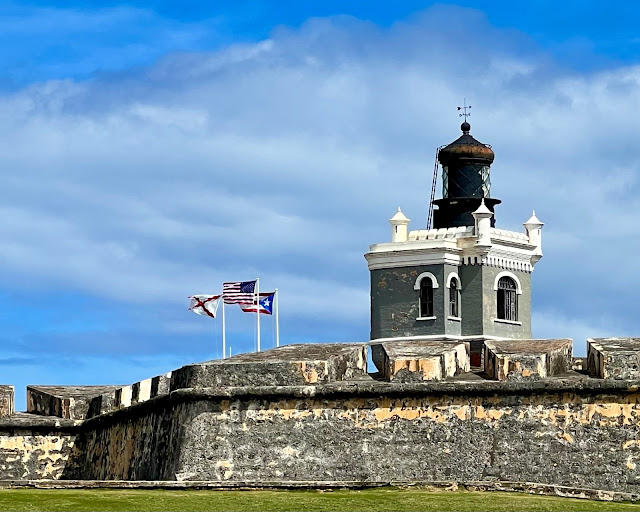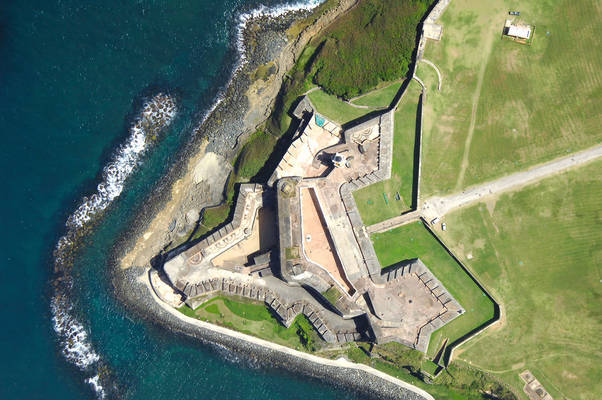One morning while walking along a stretch of Waikiki some years ago,
I came to an abrupt stop.
I suddenly saw a pile of rocks I had passed dozens of times before:
four huge boulders of basalt,
ironically the first rock I had learned to identify as a small girl.
Once I spotted them, I couldn't imagine how I hadn't seen them.
Granted the basalt boulders are located in a high traffic tourist area
with lots of activity on Kalakaua Avenue, the beach, and in the water,
and I'm guessing I'm not the only person who has overlooked them.
The stones are clustered inside a circular fence on the Diamond Head side
of the Honolulu Police Department's Waikiki Substation on Kūhiō Beach.
They stand near the popular bronze statue of Duke Kahanamoku
and are located just across the street from the Hyatt Regency.
A Department of Parks and Recreation City and County of Honolulu plaque
Duke Kahanamoku
Hawaiian Olympic Champion
and Father of International Surfing
and Father of International Surfing
Honolulu, Hawaii, USA
March 3, 2016
March 3, 2016
© M. Louise (MacBeath) Barbour/Fundy Blue. All Rights Reserved
When I approached the stones, I saw they were a beautiful vesicular pahoehoe basalt
from the numerous cavities pitting their surfaces, ropy texture,
and the lack of jagged, broken clinker.
The Basalt Stones
with Kalakaua Avenue and the Hyatt Regency in the Background
Honolulu, Hawaii, USA
March 3, 2016
The four stones stood on a raised lava stone platform or paepae,
and, when I walked around the fence, I discovered an altar or ahu with flower offerings.
Obviously these were not just any old basalt boulders piled haphazardly near the beach.
Ahu with Offerings
Nā Pōhaku Ola Kapaemāhū ā Kapuni
Honolulu, Hawai'i, USA
March 3, 2016
© M. Louise (MacBeath) Barbour/Fundy Blue All Rights Reserved
revealed the human story behind these sacred boulders, and what a story!
According to orally transmitted legends, the Moʻolelo,
the Nā Pōhaku Ola Kapaemāhū ā Kapuni,
or Stones of Life, are the legacy of four powerful māhū or healers,
Kapaemāhū, Kapuni, Kinohi and Kahāloa,
who came from Moa'ulanuiakea, Ra’iātea, some 500 years ago.
They were exceptional individuals, third-gender people with dual male and female spirits.
Sometimes referred to as wizards, the māhū brought the healing arts to Hawaii.
Ra’iātea and Tahiti in the Society Islands of French Polynesia
Ra’iātea, French Polynesia
October 21, 2023
© M. Louise (MacBeath) Barbour/Fundy Blue
All Rights Reserved
The four māhū traveled throughout the islands,
becoming famous as they miraculously healed and cured the people.
Later they settled at a place called Ulukou where the Moana Surfrider now stands.
The time came when the māhū had to return to Ra’iātea.
They asked for two stones to be placed at their Ulukou home
and two more at their favorite bathing place in the sea,
now known as Kahaloa Beach or Royal Hawaiian Beach.
Four huge stones were quarried from the basaltic rock at Kaimukī,
chosen by the māhū because they rang like a bell when struck.
On Pō Kāne (the Night of Kane) thousands moved the rocks
from the Kaimukī quarry, a distance of almost two miles.
After a full cycle of the moon filled with fasting, prayers, and incantations,
each māhū gave his-her name and mana or spiritual power to one of the four stones.
The original account indicates that a young chieftess was sacrificed
and placed beneath the stone of the head mākū, Kapaemāhū.
Then the four vanished.
Hidden in Plain Sight
The Healing Stones of Waikiki
Honolulu, Hawai'i, USA
During the 1970s, Hawaiians experienced a cultural renaissance
© M. Louise (MacBeath) Barbour/Fundy Blue
All Rights Reserved
These culturally significant stones faded from general memory as well.
In 1907, the stones were rediscovered on the site of Princess Kaʻiulani's home.
In 1910, Governor Archibald Cleghorn, father of Princess Kaʻiulani,
stipulated that the stones stay on the property and the property be given to the city.
In 1941, the city leased the property to build a bowling alley,
and the sacred stones were used in the building's foundation.
Next, 1958, the stones were identified and repaired
when the bowling alley was demolished.
Then, in 1963, the stones were moved to Kūhiō Beach.
Finally, in 1980 the stones were moved 50 feet mauka, toward the mountains.
Nā Pōhaku Ola Kapaemāhū ā Kapuni ~ Stones of Life
Kūhiō Beach, Honolulu, Hawai'i, USA
March 3, 2016
© M. Louise (MacBeath) Barbour/Fundy Blue All Rights Reserved
During the 1970s, Hawaiians experienced a cultural renaissance
and growing pride in their hula, music, language, and traditional sea voyages.
Celebrating Hawaiian Culture on Prince Kūhiō's Birthday
Hyatt Regency, Waikiki
Honolulu, Hawai'i, USA
March 26, 2014
© M. Louise (MacBeath) Barbour/Fundy Blue All Rights Reserved
When the stones' cultural significance was fully understood,
a group of people worked to create a wahi pana (sacred place) for the healing stones.
The four stones were placed on the platform (paepae) and protected with the altar (ahu).
Healing plants were planted at the site: bamboo (ohe), wild tobacco (makahala),
Hawaiian cotton (mao), and beach naupaka (naupaka kahakai).
During the final ceremonies, a Tahitian delegation from Ra’iātea
blessed the sacred stones and gave a small stone from Tahiti as an offering.
The Tahitian Stone, Ta‘ahu ea, as an Offering, ho‘okupu
Honolulu, Hawai'i, USA
March 3, 2016
© M. Louise (MacBeath) Barbour/Fundy Blue All Rights Reserved
On October 24, 2023 a new plaque for the stones was dedicated.
After more than a century of suppression, the true nature of the mākū was acknowledged.
Neither male or female, the mākū were traditionally considered a third gender
and revered by Polynesian, Hawaiian, and other cultures throughout the Pacific.
Furthermore, the four healers' duality of spirit enhanced their healing powers,
which included laying of the hands and the use of medicinal plants.
Those of you who know me and my blog know I love to travel.
Perhaps the thing I appreciate most about traveling
is learning about different people and cultures.
My Western and Christian backgrounds have shaped my thinking,
and it's important for me to question my beliefs and challenge them with new perspectives.
The more I experience and learn, the more I believe
that gender extends beyond male and female.
I'm linking to Rain's Thursday Art and Dinner Date, Tom's Aloha Friday, and Nicole's Friday Face Off.
Have a great weekend!
 |
Till next time ~
Fundy Blue.
Waimanalo Beach Park, Oʻahu,
March 2, 2024
© M. Louise (MacBeath) Barbour/Fundy Blue
All Rights Reserved
Note: I did a lot of research on the healing stones. There is conflicting, incomplete, and inaccurate information online. I've used the most accurate information I could find, and if there is any wrong information in my post, the fault is mine.
Māhū: "mahu – a Polynesian term for third gender individuals who are neither male nor female but a mixture of both in mind, heart, and spirit."
Original Source: Tradition of the Wizard Stones KA-PAE-MAHU: On the Waikiki Sea-Beach Premises of Hon. A. S. Cleghorn Courtesy of James. H. Boyd, pages 139-141.
Governor A. S. Cleghorn
Indigenous Peoples Literature Mythologies of French Polynesia/Tahiti
Ka'iwakīloumoku Pacific Indigenous Institute
Wikimedia: Kapaemahu (The Stones of Life) in Waikīkī.
Location of Moa'ulanuiakea. Some sources say Moa'ulanuiakea is in Tahiti, and I couldn't find it on a map. Tahiti may be a general reference for the islands or a reference for the island of Tahiti.
Text of Older Plaque
Image of New Plaque







































.jpg)




